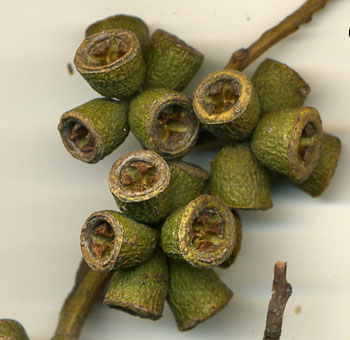Eucalyptus botryoides
 Southern mahogany, bangalay
Southern mahogany, bangalay
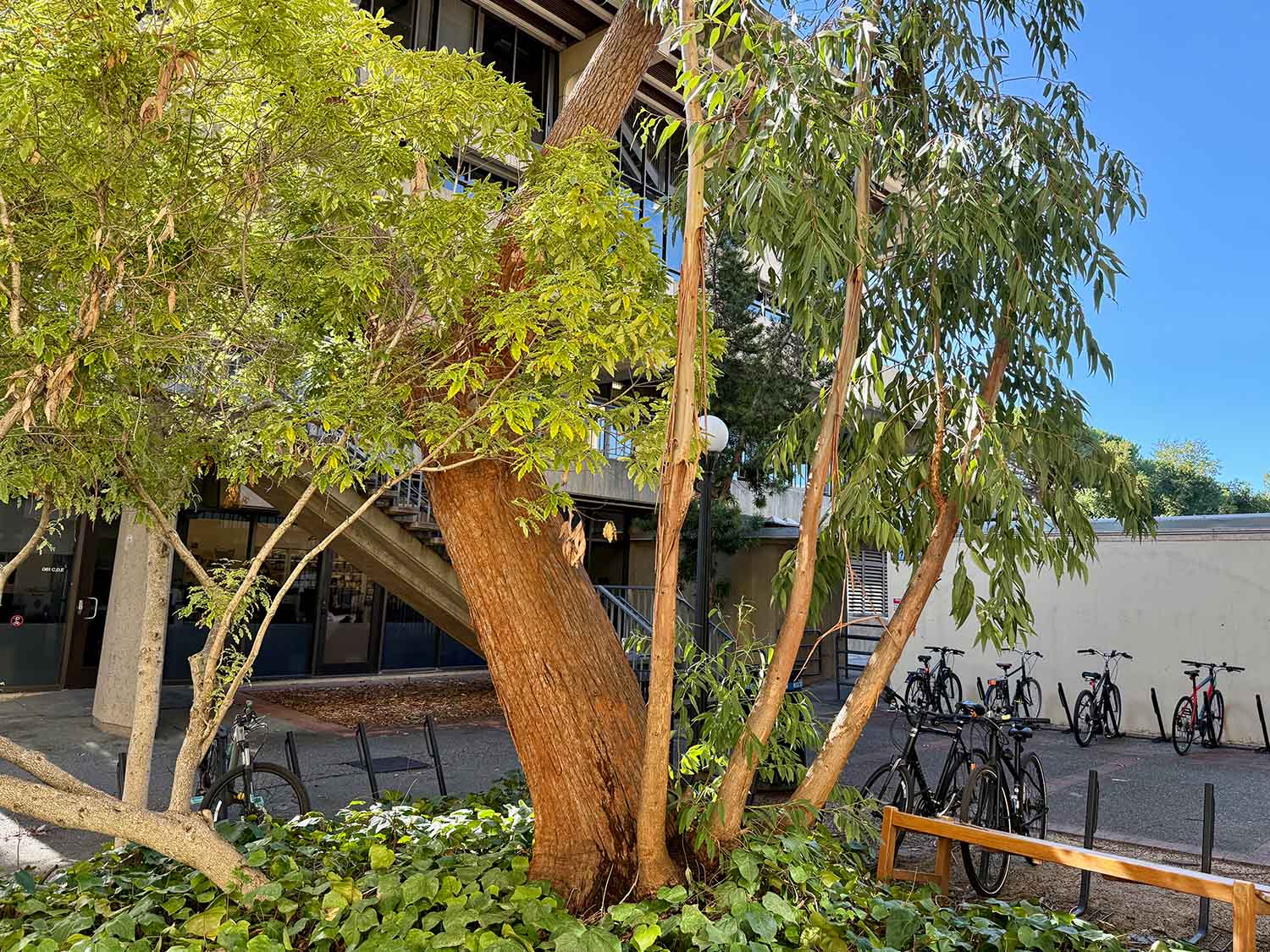
This imposing tree has rough, fibrous bark that is a warm brown to gray and longitudinally fissured. It persists on most of the tree, leaving the smaller branches smooth. The flower buds and fruit are distinctive, arranged in groups of 7–11 on a strap-shaped peduncle. The buds, about ½ inch long, comprise an elongated, sometimes almost cylindrical shaft capped by a conical to rounded operculum that looks a bit oversized. These do not have their own individual stalk, and thus look crowded together, especially when the capsules develop and mature. (Botrys is Greek for a bunch of grapes.)
The swamp mahogany, E. robusta, is closely related and has similar though deeper fissured bark; its buds and fruit, though larger, are still borne on a flat peduncle. The “mahogany” in their names refers to the deep pink to reddish wood that is reminiscent of West Indian mahogany (Swietenia mahogani).
Our only remaining specimen is between Durand and McCullough buildings, next to the charming grove of pale-trunked Corymbia citriodora, the lemon-scented gum. Three sprouts from its base are forming slender trunks in their own right, two of which have breached the height of three-storey McCullough. A trio of trees reported south of Hoover Tower, on Crothers Way, were removed by 2016, likely due to the reconfiguration of the hardscaping there. An intriguing hybrid grew on the former Eucalypt Walk on Campus Drive, just south of Jane Stanford Way. It matched all the attributes of E. botryoides but for the bark, which was smooth and peeling, uncharacteristic of any of its close relatives. It may have been a cross with Sydney blue gum, E. saligna, which has similar buds and leaves but a smooth trunk; these two species intergrade in nature where their ranges overlap.
Gallery

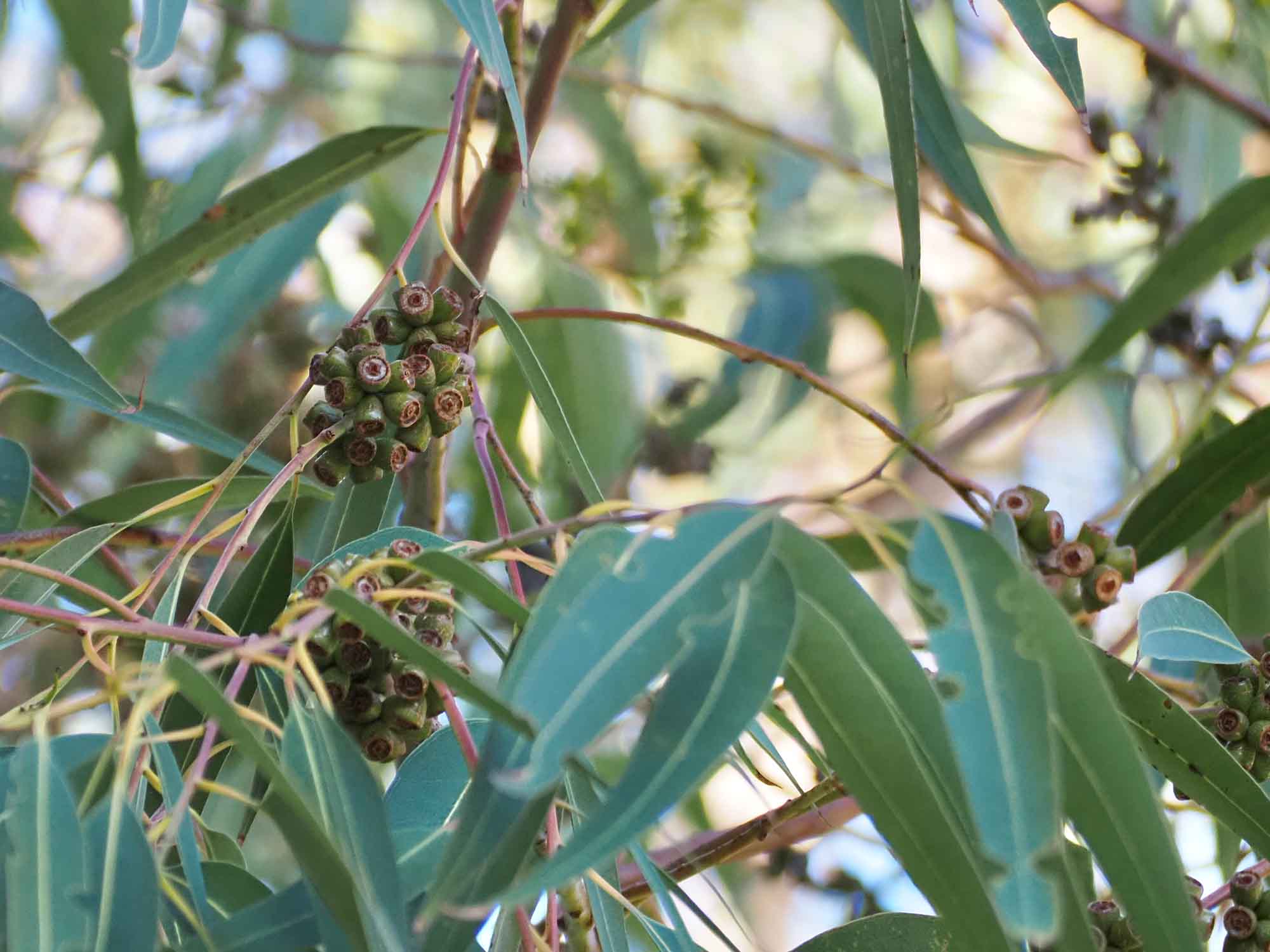
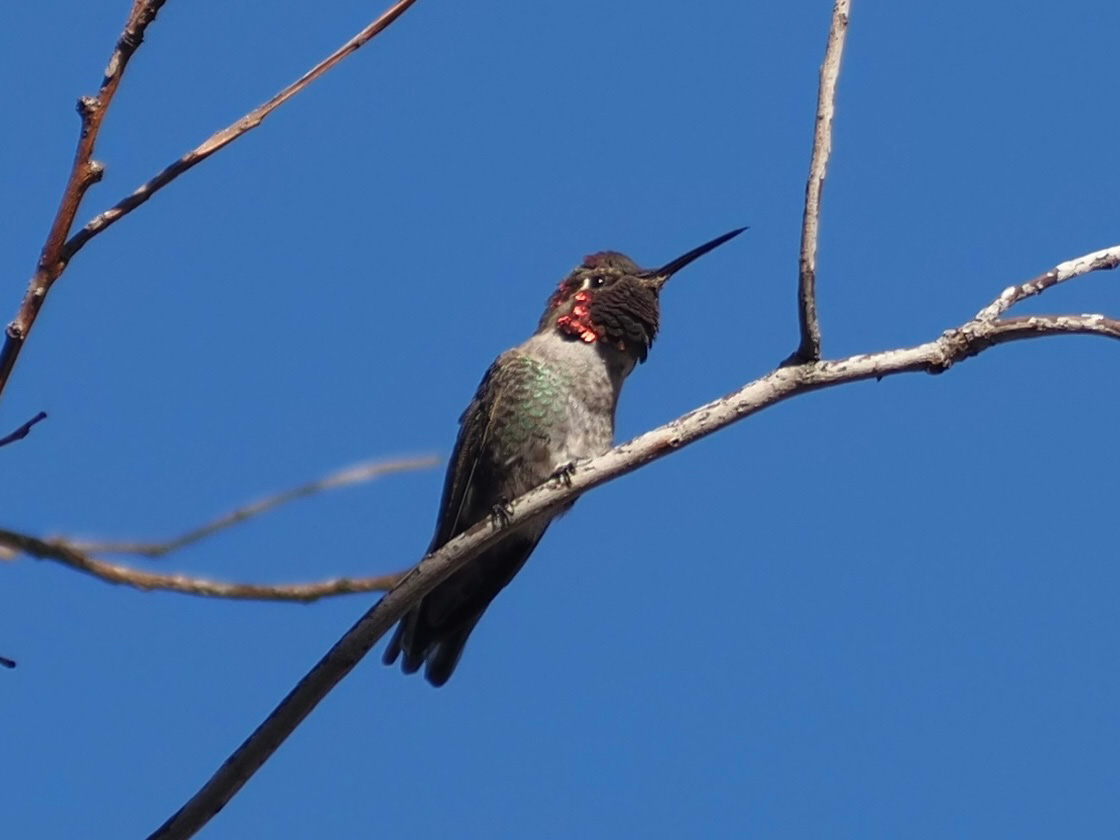
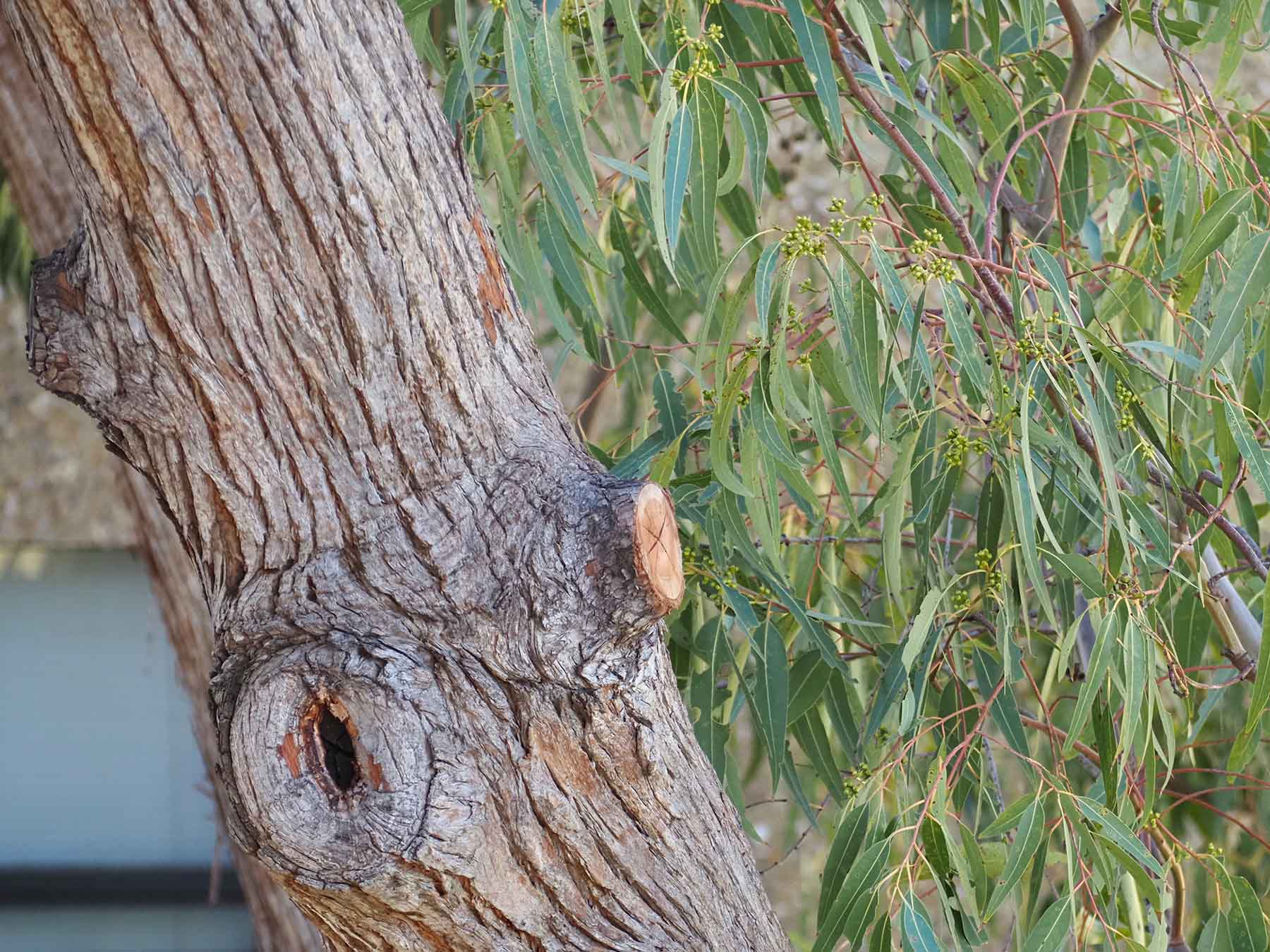
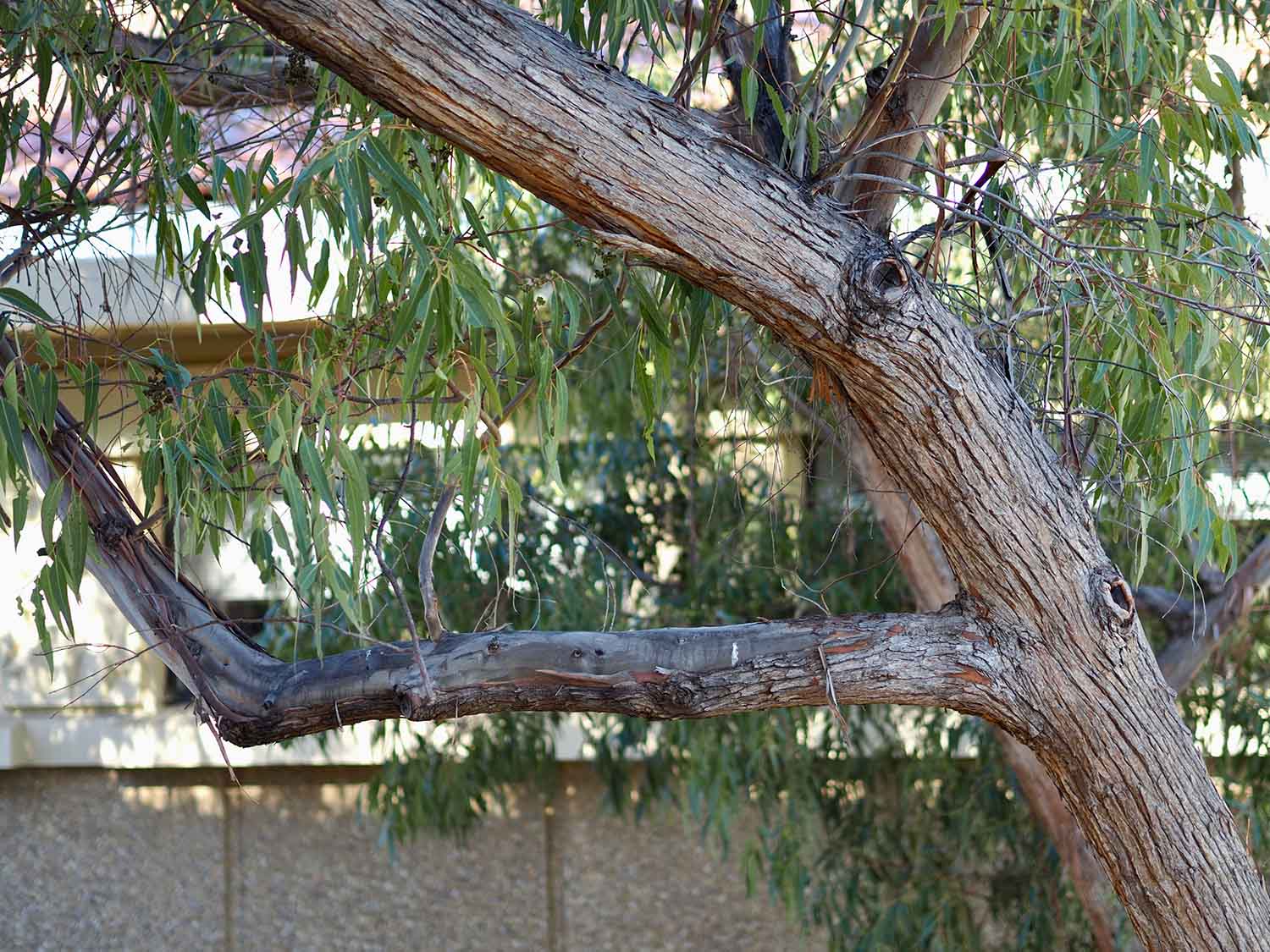
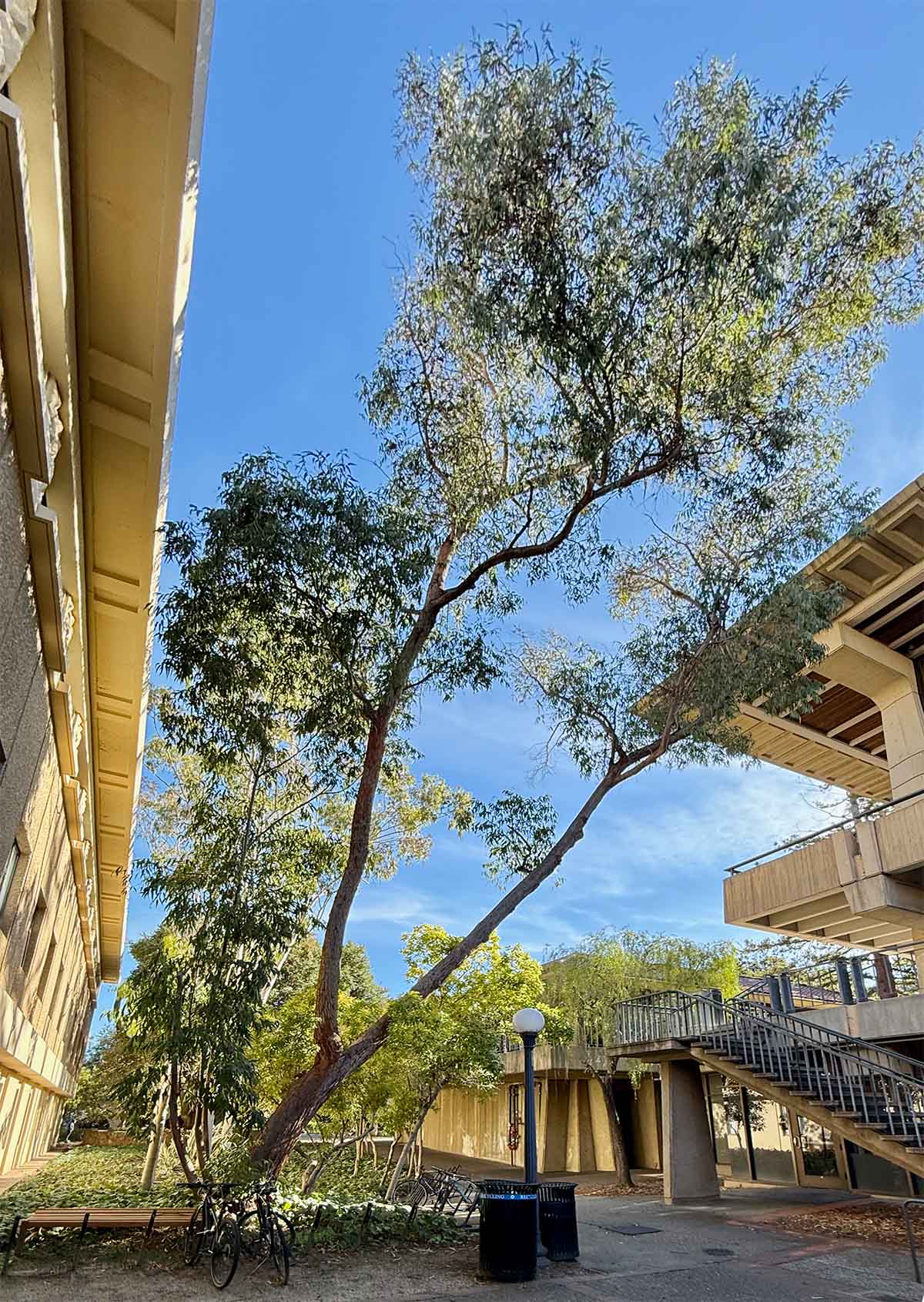

- Main References for New Tree Entries.
- Peggy Annabel (January 1, 2011) weighed in on the hybrid, saying E. saligna and E. grandis both hybridize with E. botryoides near Sydney.
About this Entry: Authored Jan 2025 by Sairus Patel.

